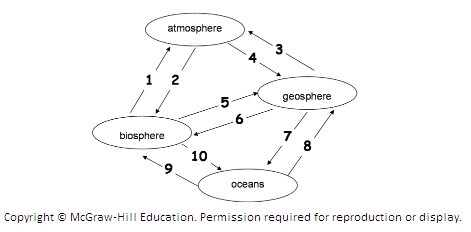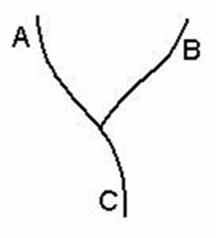The following diagram illustrates the Carbon Cycle. Each arrow represents the transfer of carbon from one component of the Earth system to another. For example, arrow 1 represents the transfer of carbon from the biosphere to the atmosphere. Match the answers below to the number on the diagram. Match the answer to number 5 on the diagram.
Match the answer to number 5 on the diagram.
A. Volcanic eruption
B. Decay
C. Photosynthesis
D. Fossil fuel formation
E. Respiration
Answer: D
You might also like to view...
The diagram depicts the confluence of two perennial streams (A and B) forming C. Which of the following statements regarding stream C must be true?

A. Stream discharge is greater than in A or B
B. Stream flow velocity is greater than in A or B
C. Stream gradient is less than in A or B
When an eruption cloud spills downslope from the crater rim, it forms a(n) _______________ flow
Fill in the blank with correct word.
Acidic rain, snow, fog, and cloud vapor typically have a pH of ____.
A. about 7.0 B. 5.7 to 6.2 C. less than 5.6 D. about 6.6 E. more than 7.6
Sand and other sediment
A. can slump downward if the sea bottom has too gentle a slope. B. are moved by the wind if the material is coarser than sand. C. only move up and down the slope of the beach. D. can move laterally along the coast if waves approach the beach at an angle. E. All of these choices are correct.